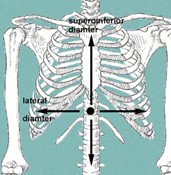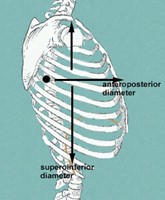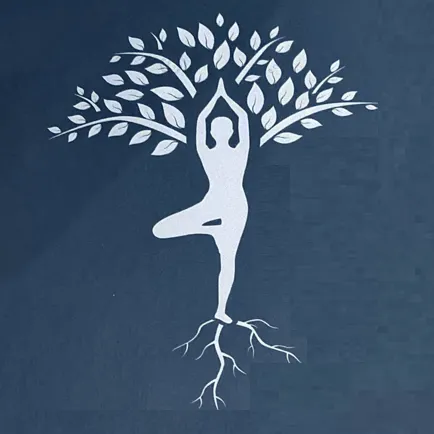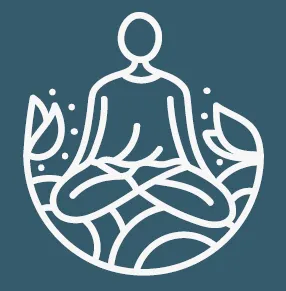Respiration et Yoga
Écrit par Elke Hottentot

Breathing, we do it all the time, but how....?
Breathing: we do it all the time, but how does it work?
To give you an answer to this question, I will describe the respiratory movement from a purely physical perspective, meaning the mechanical process that facilitates the exchange of CO2 with O2.
The process of exchanging CO2 with O2 is called haematosis, which is the conversion of venous CO2-rich blood into arterial O2-rich blood by oxygenation in the lungs. By way of breathing in, approximately 500 ml[1] of oxygen-rich air from outside enters into the lungs and by way of breathing out, the same amount of carbon monoxide-rich air leaves the body. This happens on average 12 – 17 times per minute.[2] The lungs themselves are passive during the entire respiratory process.[3]
The act of breathing takes place as a result of a delicate interplay between a number of important structures, namely the lungs, the primary and accessory muscles and the thorax. The thorax surrounds the lungs and heart is comprised of bony structures, namely: the 12 thoracic vertebras, 12 pairs of ribs and the sternum. It is made up off 80 joints, of which 40 are mobile.[4] It is this bony structure and its inherent rigidity that gives a precise form to respiratory motion and ensures the stability of certain actions.[5] Neurologically, “...the respiratory cycle is controlled in the respiratory centres of the brain stem.”[6]
The activity in the muscles described above leads to a change in the volume of the thoracic cavity, which in turn leads to changes in pressure in the cavity. It is this change in pressure that causes the air to either move into, or out of, the lungs. In order to achieve this change in size of the thoracic cavity, the ribs and diaphragm move in the following three dimensions (see figure 1 and 2 on the following page)[7]:
Fig 1: Lateral dimension

Fig 2: Antero-posterior and
Supero-inferior dimensions

Inspiration
Primary muscles of inspiration are comprised of the diaphragm and the external and internal inter-costal muscles. Accessory muscles generally are only used when the body needs quick access to air or when a breathing pattern disorder exists.[8] There appears to be some controversy as to which muscles ought to be considered accessory muscles[9], however agreement exist that these include the sternocleidomastoid, pectoral and serratus muscles. The principal respiratory muscle is the diaphragm, which is active during inspiration and without which we could not breathe. Assisted by the internal and external intercostal muscles, it plays a fundamentally important role. The diaphragm is situated between the thoracic and the abdominal cavity and thus separates these two cavernous spaces. It is attached to the lumbar vertebras, the sternum and the ribs.[10]
Figure 3: Movement of the diaphragm during inspiration[11]

During[e1] inspiration (see figure 1), the lateral dimensions of the thoracic cavity are increased by the lateral movement of the 7th to 10th ribs. This is referred to as bucket handle. At the same time, the antero-posterior dimension of the cavity is increased by the fact that the thoracic spine, naturally a kyphotic structure, extends, thereby lifting the so-called true ribs (1 – 6) which in turn pushes the sternum forward. The supero-inferior dimension of the thorax is increased by the diaphragm contracting and moving downward.[12] This creates a vacuum in the thoracic cavity, which inflates the lungs by drawing air into the body through the trachea, or windpipe.[13]
Expiration
As for expiration during quiet breathing, there is little to no muscle contraction as this process is driven by the elastic recoil of the lungs.[14] “During expiration, the intercostal muscles and the diaphragm relax and the elastic fibers of the lung and the costal cartilages recoil to their original state before inspiration.[15]
Figure 4: Movement of the diaphragm during expiration[16]

The thoracic spine moves into a slight flexion that causes the sternum to descend[17], which in turn reduces the volume of the thoracic cavity and, as such, the lungs. This allows the air to flow out as the lungs deflate.[18]. In a sense then, the expiration is referred to as a passive movement.[19]
However, if expiration is forced due to increased physical activity or an illness that leads to the loss of elasticity of the lungs, or is voluntary deepened, the intercostals and abdominal muscles become activated in order to decrease the size of the thoracic cavity to the maximum so as to help expel the air.[20]
As is evident from the above description of the mechanics of the respiratory movement, good breathing requires the proper functioning of a vast array of parts of one’s body. Yoga is the perfect means by which to achieve this through its principal ability to raise a person’s consciousness of body, mind and spirit.
[1] Grand Atlas du corps humain (2010). Larouse, Paris, p. 141.
[2] Calais - Germain, B. (2007): éditions désiris, Méolans-Revel, Respiration: anatomie geste respiratoire, p. 15.
[3] Redini, S. (2007). Le grand livre de pranayama: Le soufflé retrouve, De Vecchi S. A., Paris, p. 13.
[4] Calais - Germain, B. (2007): éditions désiris, Méolans-Revel, Respiration: anatomie geste respiratoire, p. 37.
[5] Idem, p. 35.
[6] http://www.naturalhealthschool.com/diaphragm_breathing.html, May 1 2012
[7] Idem.
[8] Muscles of respiration: http://en.wikipedia.org/wiki/Muscles_of_respiration, May 1 2012.
[9] Idem.
[10] Redini, S. (2007). Le grand livre de pranayama: Le soufflé retrouve, De Vecchi S. A., Paris, p. 13.
[11] http://www.naturalhealthschool.com/diaphragm_breathing.html, May 1 2012.
[12] Idem.
[13] The respiratory system. http://www.naturalhealthschool.com/diaphragm_breathing.html, May 1 2012.
[14] Muscles of respiration: http://en.wikipedia.org/wiki/Muscles_of_respiration, May 1 2012.
[15] http://www.naturalhealthschool.com/diaphragm_breathing.html, May 1 2012.
[16] Idem.
[17] Calais, Germain, B. (2007): éditions désiris, Méolans-Revel, Respiration: anatomie geste respiratoire, p. 45.
[18] http://www.naturalhealthschool.com/diaphragm_breathing.html, May 1 2012.
[19] Redini, S. (2007). Le grand livre de pranayama: Le soufflé retrouve, De Vecchi S. A., Paris, p. 15.
[20] Idem, p. 15.






